Abstract
In a discrete-trial choice situation, 12 pigeons were trained to discriminate which of two different fixed ratios they had completed. Psychometric functions were obtained at three ratio requirements (i.e., with the larger ratio set at 10, 20, or 30 responses) by gradually reducing the size of the smaller value. Although different response biases developed across subjects, in each case accuracy decreased systematically with ratio difference regardless of absolute ratio requirements. Above-chance performances were maintained even at relative ratio differences of 10% or less. Estimates of the Weber fraction showed that, in general, discriminability improved with absolute ratio size up to 30 responses, and beyond, when the results of other studies are considered. A similar trend held for rats studied by other investigators in fixed-ratio “counting” tasks at lower requirements. In terms of a signal-detection analysis, performance was similar to that reported for other species and dimensions. Taken together, the results suggest that for this somewhat novel dimension the same psychophysical relations hold as are commonly observed for exteroceptive stimuli.
Full text
PDF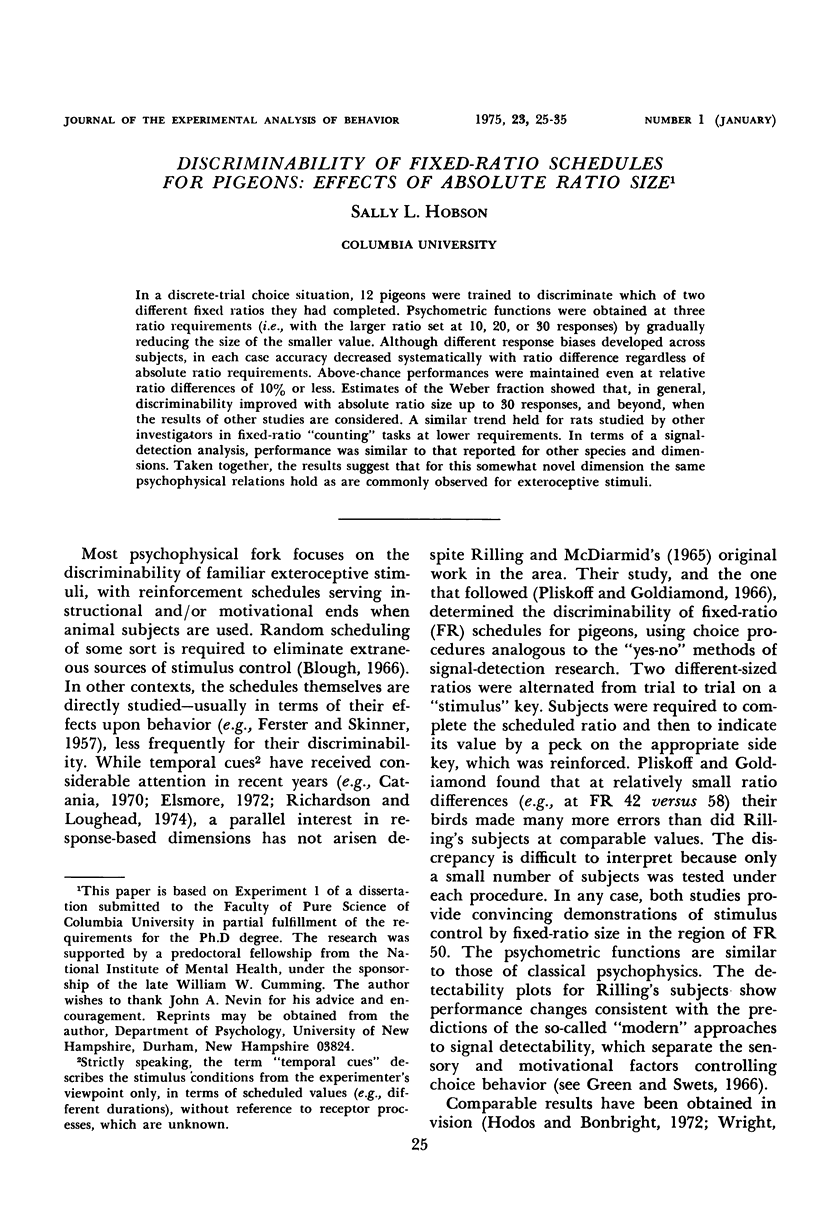

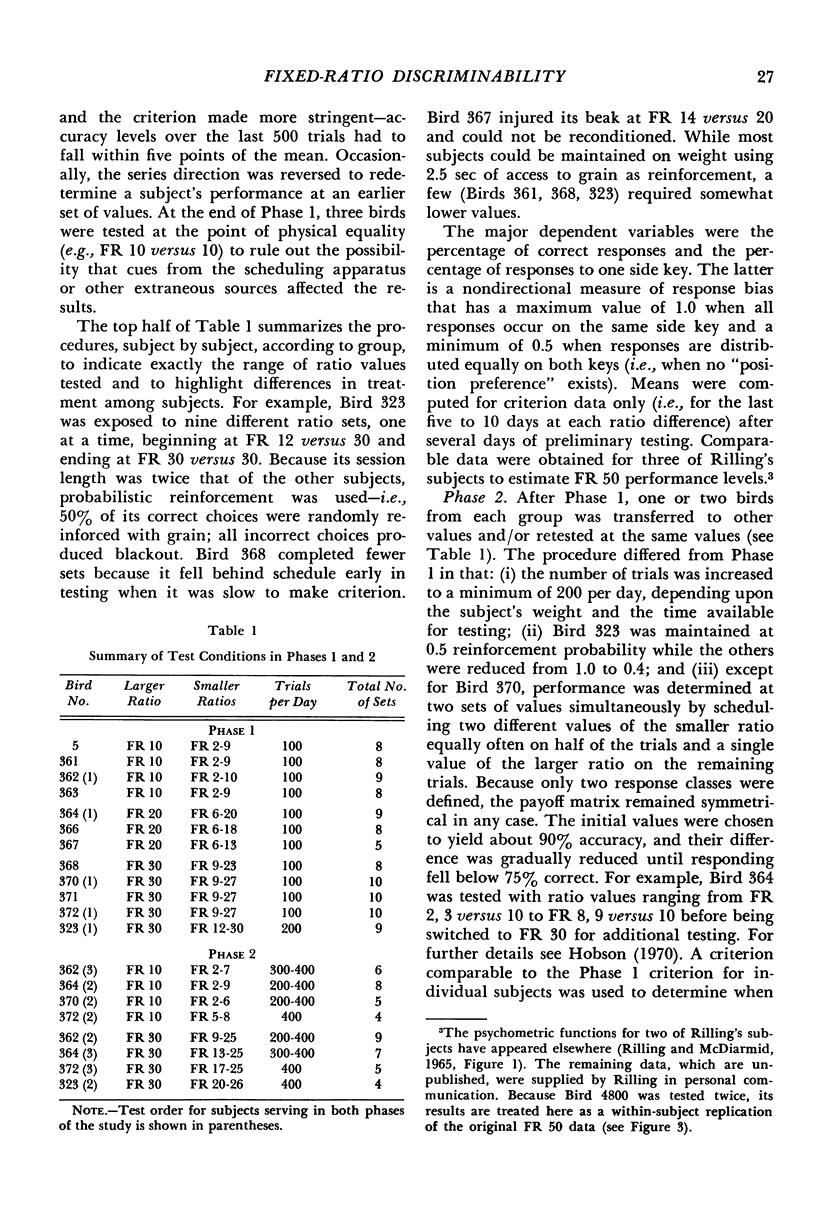


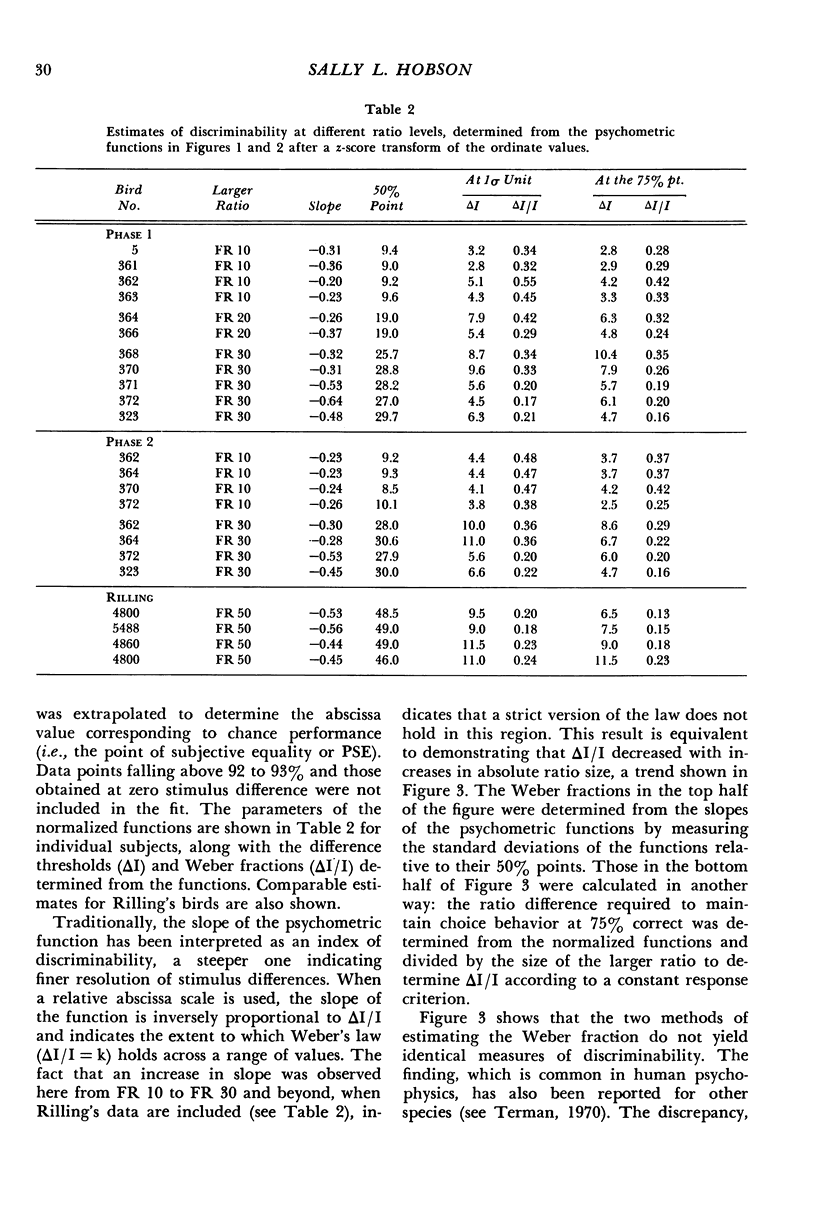
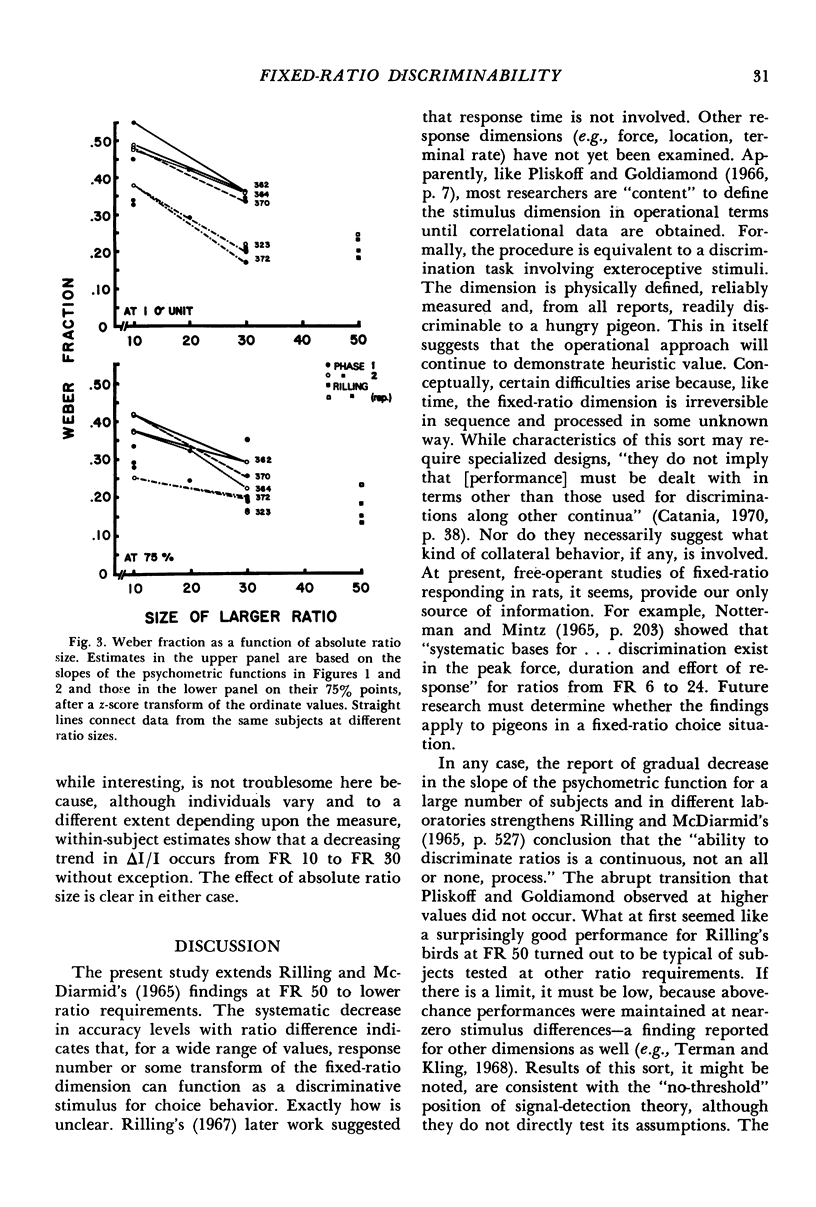
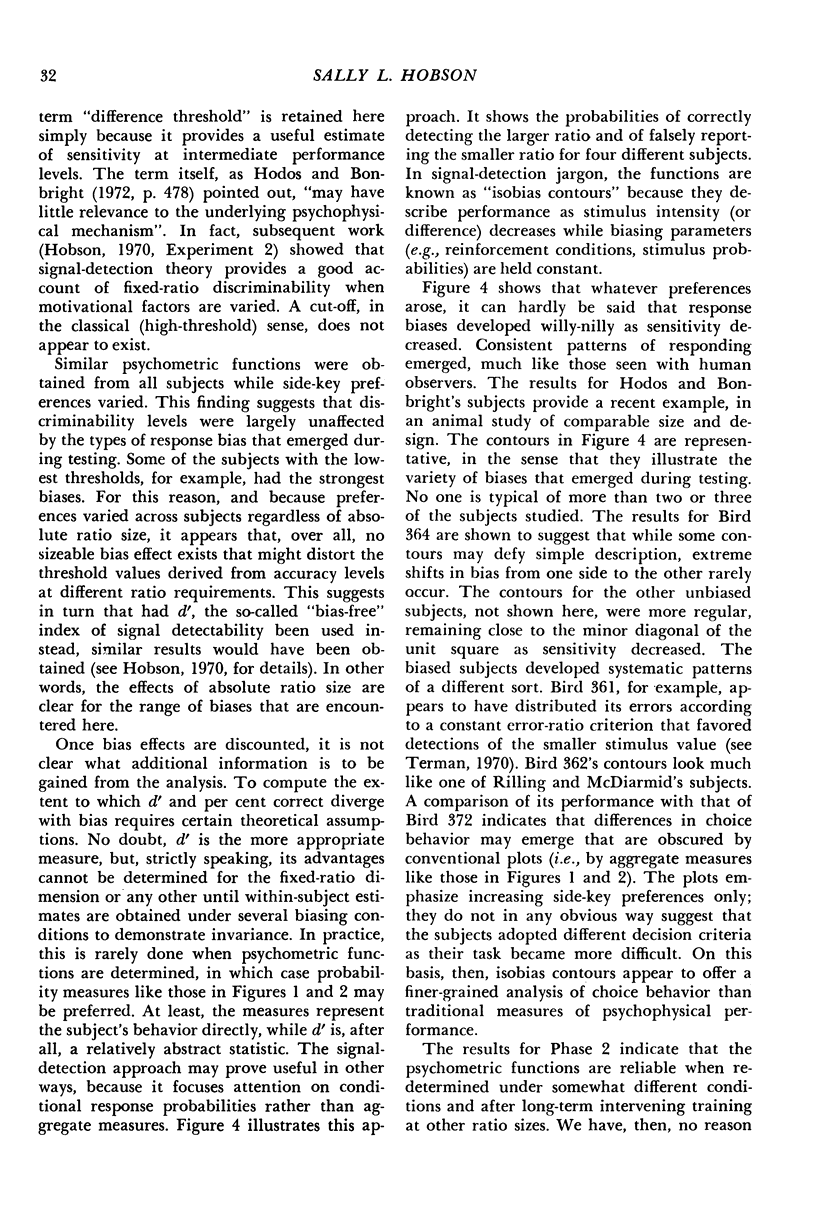
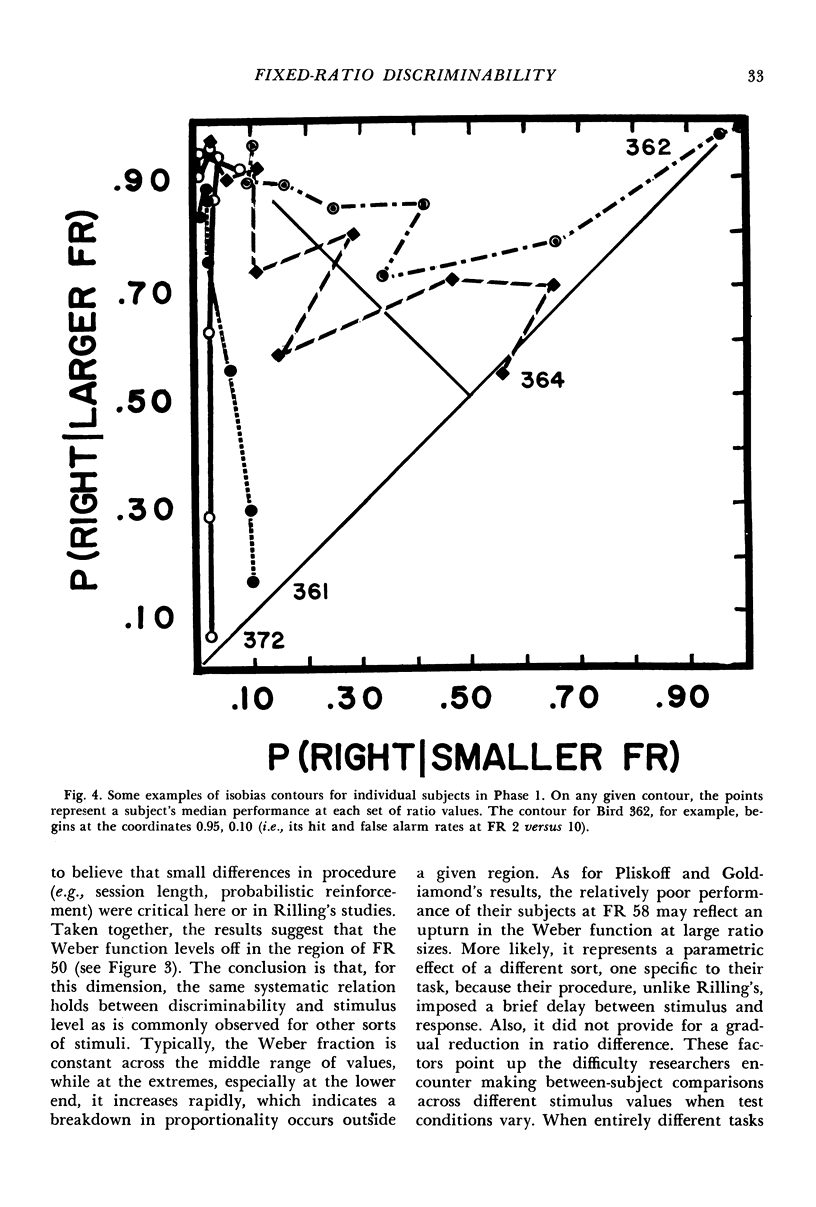
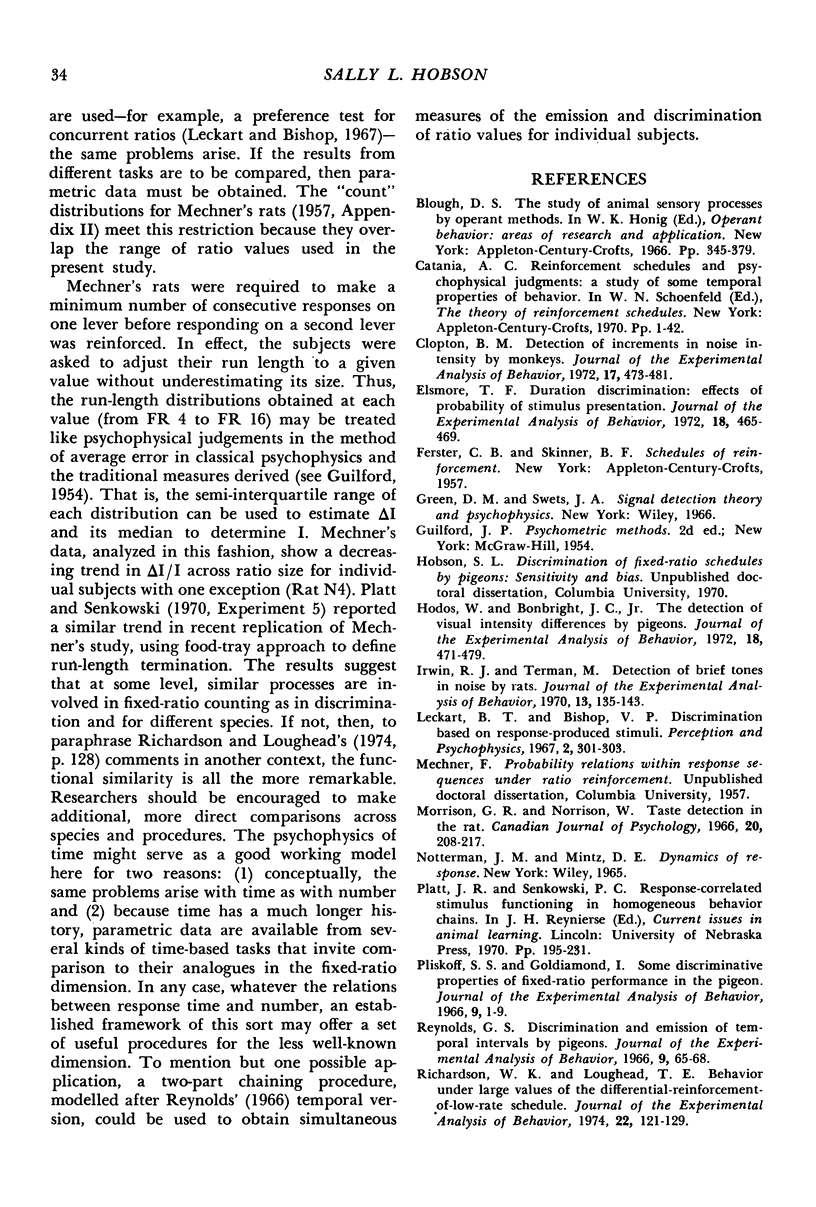
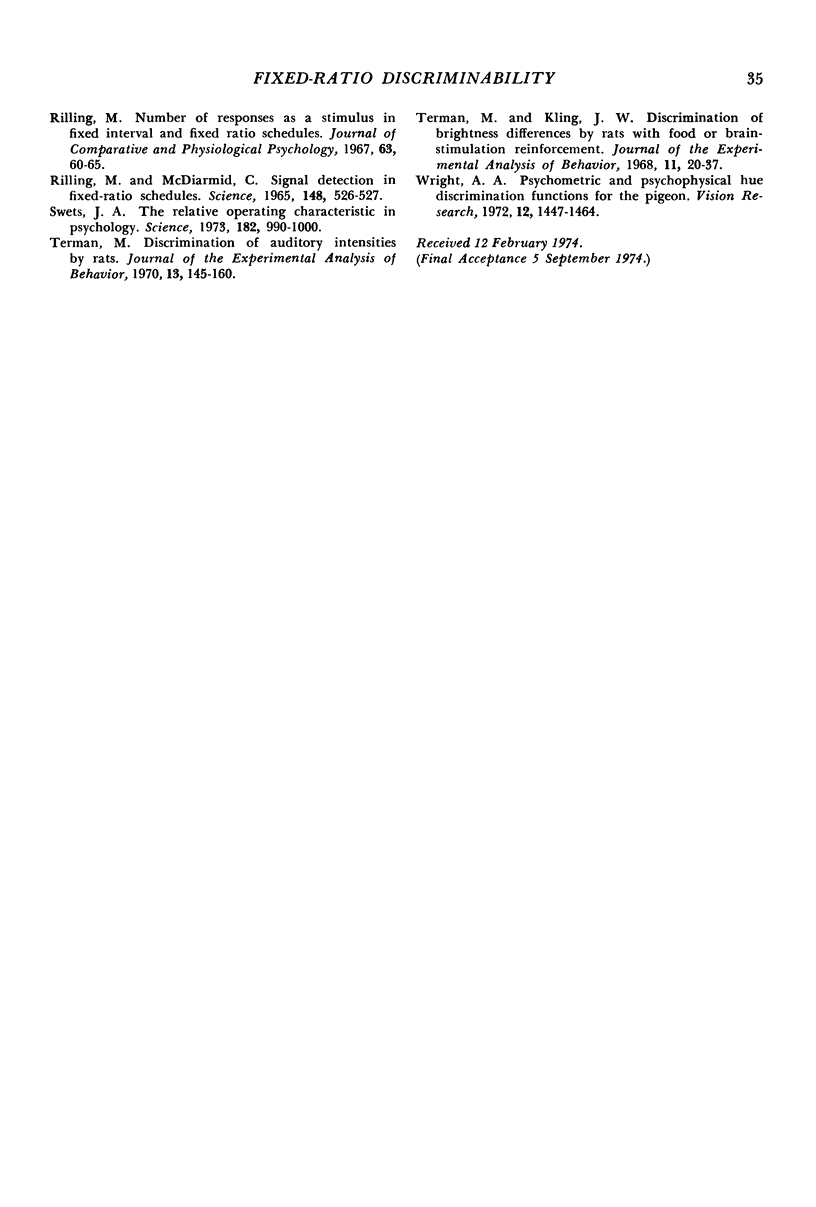
Selected References
These references are in PubMed. This may not be the complete list of references from this article.
- Clopton B. M. Detection of increments in noise intensity by monkeys. J Exp Anal Behav. 1972 May;17(3):473–481. doi: 10.1901/jeab.1972.17-473. [DOI] [PMC free article] [PubMed] [Google Scholar]
- Elsmore T. F. Duration discrimination: effects of probability of stimulus presentation. J Exp Anal Behav. 1972 Nov;18(3):465–469. doi: 10.1901/jeab.1972.18-465. [DOI] [PMC free article] [PubMed] [Google Scholar]
- Hodos W., Bonbright J. C., Jr The detection of visual intensity differences by pigeons. J Exp Anal Behav. 1972 Nov;18(3):471–479. doi: 10.1901/jeab.1972.18-471. [DOI] [PMC free article] [PubMed] [Google Scholar]
- Irwin R. J., Terman M. Detection of brief tones in noise by rats. J Exp Anal Behav. 1970 Mar;13(2):135–143. doi: 10.1901/jeab.1970.13-135. [DOI] [PMC free article] [PubMed] [Google Scholar]
- Morrison G. R., Norrison W. Taste detection in the rat. Can J Psychol. 1966 Jun;20(2):208–217. doi: 10.1037/h0082938. [DOI] [PubMed] [Google Scholar]
- Pliskoff S. S., Goldiamond I. Some discriminative properties of fixed ratio performance in the pigeon. J Exp Anal Behav. 1966 Jan;9(1):1–9. doi: 10.1901/jeab.1966.9-1. [DOI] [PMC free article] [PubMed] [Google Scholar]
- RILLING M., MCDIARMID C. SIGNAL DETECTION IN FIXED-RATIO SCHEDULES. Science. 1965 Apr 23;148(3669):526–527. doi: 10.1126/science.148.3669.526. [DOI] [PubMed] [Google Scholar]
- Reynolds G. S. Discrimination and emission of temporal intervals by pigeons. J Exp Anal Behav. 1966 Jan;9(1):65–68. doi: 10.1901/jeab.1966.9-65. [DOI] [PMC free article] [PubMed] [Google Scholar]
- Richardson W. K., Loughead T. E. Behavior under large values of the differential-reinforcement-of-low-rate schedule. J Exp Anal Behav. 1974 Jul;22(1):121–129. doi: 10.1901/jeab.1974.22-121. [DOI] [PMC free article] [PubMed] [Google Scholar]
- Rilling M. Number of responses as a stimulus in fixed interval and fixed ratio schedules. J Comp Physiol Psychol. 1967 Feb;63(1):60–65. doi: 10.1037/h0024164. [DOI] [PubMed] [Google Scholar]
- Swets J. A. The Relative Operating Characteristic in Psychology: A technique for isolating effects of response bias finds wide use in the study of perception and cognition. Science. 1973 Dec 7;182(4116):990–1000. doi: 10.1126/science.182.4116.990. [DOI] [PubMed] [Google Scholar]
- Terman M. Discrimination of auditory intensities by rats. J Exp Anal Behav. 1970 Mar;13(2):145–160. doi: 10.1901/jeab.1970.13-145. [DOI] [PMC free article] [PubMed] [Google Scholar]
- Terman M., Kling J. W. Discrimination of brightness differences by rats with food or brain-stimulation reinforcement. J Exp Anal Behav. 1968 Jan;11(1):29–37. doi: 10.1901/jeab.1968.11-29. [DOI] [PMC free article] [PubMed] [Google Scholar]
- Wright A. A. Psychometric and psychophysical hue discrimination functions for the pigeon. Vision Res. 1972 Sep;12(9):1447–1464. doi: 10.1016/0042-6989(72)90171-x. [DOI] [PubMed] [Google Scholar]


